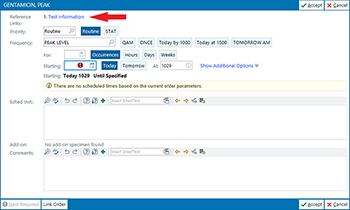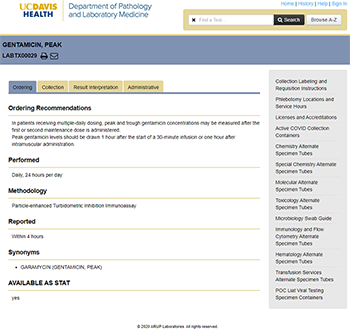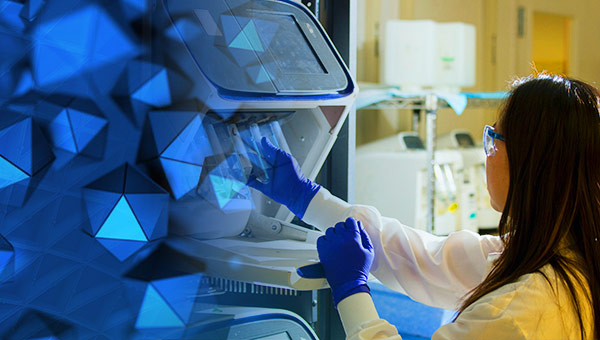Raymond Gong, M.D., Pathology Resident
Nam K. Tran, Ph.D., HCLD (ABB), FAACC, Professor of Clinical Pathology
Introduction:
Therapeutic drug monitoring (TDM) is the practice of measuring drug concentrations in order to tailor dosages and maintain therapeutic levels in a patient’s bloodstream [1-2]. The goal of TDM is to improve clinical outcomes by improving efficacy, limiting toxicity, and subsequently reduce the overall cost of drug therapy. It is an interdisciplinary process that includes clinicians, pharmacists, and laboratory professionals and combines knowledge of pharmacokinetics, pharmacodynamics, the patient's clinical setting (including various preanalytical factors such as dosage, dosing interval, patient characteristics, sample type, and timing of sample collection), and analytical factors within the clinical laboratory. TDM is the standard of care for monitoring therapy with many drugs and is particularly valuable for drugs that are used for an extended period of time, show pharmacokinetic variability, and/or known to a have a narrow therapeutic index.
While the benefits of TDM are clear, a review of the literature shows that monitoring practices may not always be ideal. Based on earlier studies of TDM programs for digoxin and phenytoin, it had been reported that as many as 70% to 80% of TDM assays performed on inpatients were inappropriate [3]. This was attributed to over-monitoring as well as under-monitoring with providers failing to detect trends in TDM assay results. A more recent study focusing on TDM of vancomycin in pediatric inpatients revealed that up to 94% of TDM assays were inappropriate in that particular institution, owing to mistiming of sample collection and lack of clinical indication [4]. Other studies, including international research, that are based on provider survey data indicate that while TDM is accessible, there has been concern over a perceived lack of clinical value, unawareness on how to use TDM, and wide variation in TDM practice [5-8]. These studies highlight the importance of knowledge of TDM guidelines and appropriate interpretation of results, which are needed to ensure effective TDM utilization, avoid excessive healthcare costs, and prevent adverse drug events.
Laboratory Best Practice:
At UC Davis Health, assays for use in TDM are offered for a variety of drug analytes including antiepileptic drugs, immunosuppressive drugs, and antimicrobials. Given appropriate clinical indication and collaboration with the Clinical Laboratory, UC Davis Health clinicians are able to order drug concentration testing for select medications. Placing orders in Epic Hyperspace provides a dialog box such as that shown in the image below (annotated with a red arrow):

As indicated by the red arrow, a reference link to the Laboratory Test Directory is available to providers for further information about laboratory tests.
Using peak gentamicin concentration as an example, accessing the link will take providers to a corresponding webpage within the Laboratory Test Directory, as shown in the following image which only partially displays the information on test specifications that is available.

As seen in the preceding image, recommendations for sample collection timing are given for drugs in which TDM has an established role. This information is intended to guide providers on appropriate sample collection, demonstrating one of the ways the Laboratory Test Directory acts as a resource for providers and an example of how the Clinical Laboratory facilitates TDM. As alluded to earlier, communication of available guidelines helps to ensure proper TDM utilization.
Continuing to use gentamicin, an aminoglycoside antibiotic, as an example, the following is a brief discussion to illustrate potential factors that come into play in TDM and their clinical significance.
Aminoglycosides are a class of antibiotics primarily used against aerobic gram-negative bacteria and act by binding to the 30S ribosomal subunit of bacterial mRNA, inhibiting protein synthesis as a result [1]. In addition to gentamicin, aminoglycosides include tobramycin and amikacin. Aminoglycosides are generally prescribed by intramuscular or intravenous injection due to their poor bioavailability through the oral route that is attributable to poor penetration of tissues. The distribution of aminoglycosides in the body is mainly restricted to the extracellular fluid compartment with the exception of bile, renal cortex, and endolymph of the inner ear, with the latter two sites being significant in the discussion of aminoglycoside toxicity [9]. Notable toxic effects include acute renal tubular necrosis and delayed-onset vestibular and cochlear sensory cell destruction [1].
The vast majority of an administered dose of an aminoglycoside is renally eliminated, primarily by glomerular filtration [1, 10]. As clearance is highly dependent on renal function, underdevelopment (such as in neonates and infants) or impairment of glomerular filtration causes accumulation of these drugs and potential nephrotoxicity and/or ototoxicity. Monitoring of drug concentrations and subsequent dose adjustments are important in the management of patients receiving aminoglycosides, especially in those with compromised renal function.
While approaches to parenteral aminoglycoside dosing differ and depend on the individual patient, two general dosing strategies are commonly used in adults: multiple-daily dosing and extended-interval (or once-daily) dosing [11]. Based on the recognized pharmacodynamic and pharmacokinetic parameters of aminoglycosides, recommendations for target concentrations (peak, trough, and random) and timing of sample collection for concentration monitoring have been established and are available for both multiple-daily dosing and extended-interval dosing strategies. Such recommendations for TDM of aminoglycosides are utilized at UC Davis and are provided in the Laboratory Test Directory [12].
Besides the measurement of drug concentrations, the Clinical Laboratory also aids in TDM through other available tests that may be useful in assessing manifestations of toxicity. For example, with aminoglycosides and other renally eliminated drugs, it is known that renal function affects the rate of drug clearance and thus affects the dosing approach and risk of toxicity. Standard tools to readily evaluate renal function include measurement of serum creatine concentration, creatine clearance, and estimated glomerular filtration rate, which, in the case of aminoglycoside therapy, are routinely monitored at baseline and over the duration of therapy [11].
Conclusion:
Given their pattern of distribution within the body, dependence on renal elimination, and potential for toxicity, aminoglycosides serve as a common practical example of TDM. Many other drugs are available for concentration monitoring at UC Davis Health and many of the principles demonstrated in the example of aminoglycosides still apply. It is worth noting that the Clinical Laboratory contributes to TDM through other testing methods (e.g., renal function testing, etc.) in addition to concentration monitoring.
While the Clinical Laboratory plays an important role in TDM, it is necessary to reiterate that it works with many other members of the healthcare system. An understanding of the patient's clinical setting and pharmacologic properties of the drug are crucial to the interpretation and use of drug concentration monitoring. This also entails recognition of the various factors that may affect interpretation. Knowledge of factors such as dosage, dosing interval, patient characteristics, sample type, and the timing of sample collection is key to utilizing TDM effectively.
References:
- Burtis CA, Bruns DE. Tietz Fundamentals of Clinical Chemistry and Molecular Diagnostics. Saunders; 2014.
- Birkett DJ. Therapeutic drug monitoring. Aust Prescr. 1997;20:9-11.
- Bates DW. Improving the use of therapeutic drug monitoring. Ther Drug Monit. 1998;20(5):550-5.
- Suryadevara M, Steidl KE, Probst LA, Shaw J. Inappropriate vancomycin therapeutic drug monitoring in hospitalized pediatric patients increases pediatric trauma and hospital costs. J Pediatr Pharmacol Ther. 2012;17(2):159-65.
- Sorrento TA, Bonanza KC, Salisbury DW. Pharmaceutical services in a capitated geriatric care program. Am J Health Syst Pharm. 1996;53(23):2848-52.
- Wallerstedt SM, Lindh JD. Prevalence of Therapeutic Drug Monitoring for Antidepressants and Antipsychotics in Stockholm, Sweden: A Longitudinal Analysis. Ther Drug Monit. 2015;37(4):461-5.
- Leung D, Ensom MHH, Carr R. Survey of Therapeutic Drug Monitoring Practices in Pediatric Health Care Programs across Canada. Can J Hosp Pharm. 2019;72(2):126-132.
- Choi R, Woo HI, Park HD, Lee SY. A nationwide utilization survey of therapeutic drug monitoring for five antibiotics in South Korea. Infect Drug Resist. 2019;12:2163-2173.
- Craig WA. Optimizing aminoglycoside use. Crit Care Clin. 2011;27(1):107-21.
- Mathews A, Bailie GR. Clinical pharmacokinetics, toxicity and cost effectiveness analysis of aminoglycosides and aminoglycoside dosing services. J Clin Pharm Ther. 1987;12(5):273-91.
- Gonzalez LS, Spencer JP. Aminoglycosides: a practical review. Am Fam Physician. 1998;58(8):1811-20.
- UCDH Pharmacy and Therapeutics Committee. UCDMC Adult Aminoglycoside Dosing and Monitoring Guidelines. UC Davis Health. April 2018. https://intranet.ucdmc.ucdavis.edu/pharmacy/clinical/Guidelines/AminoglycosideDosingMonitoring.pdf



